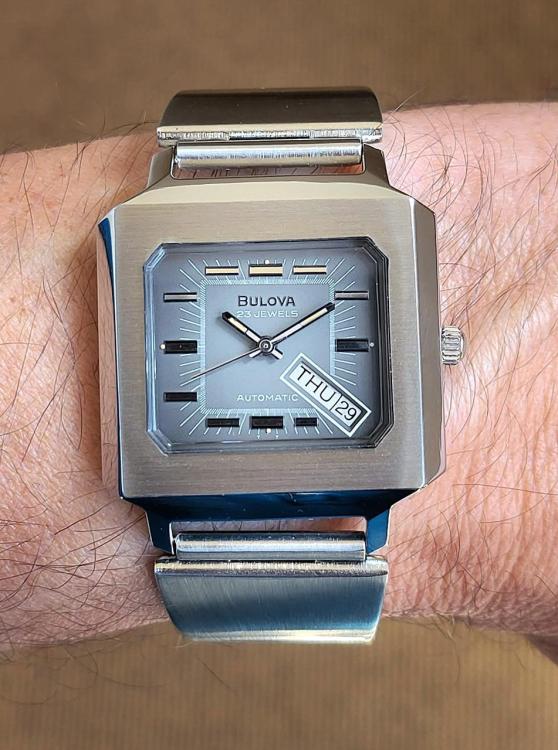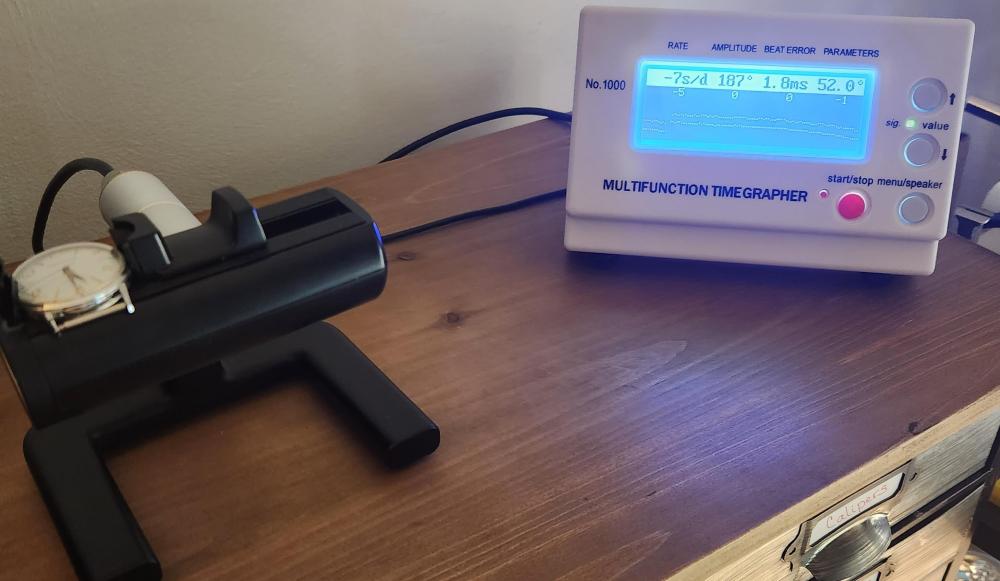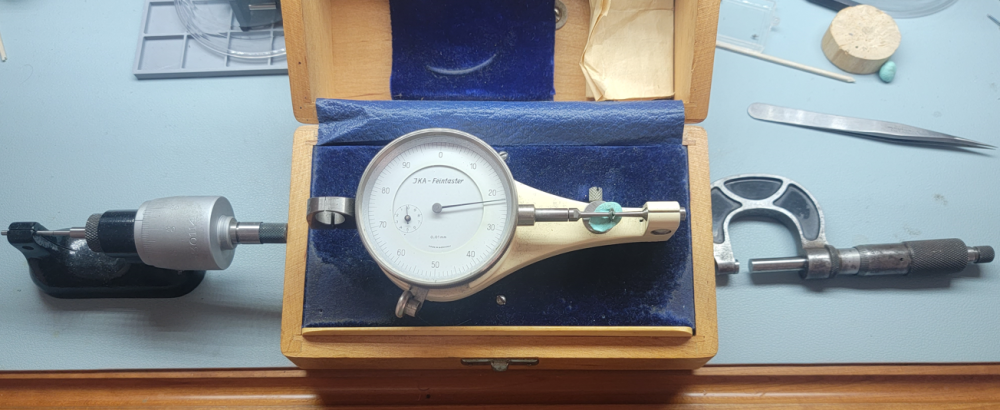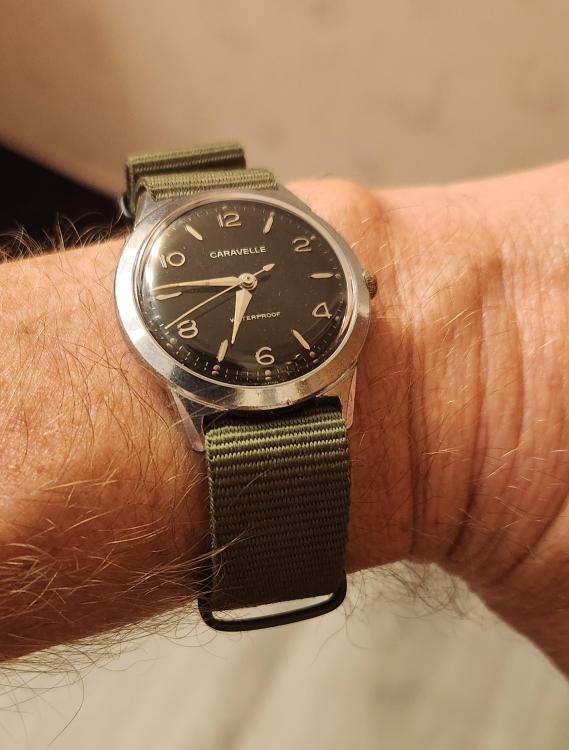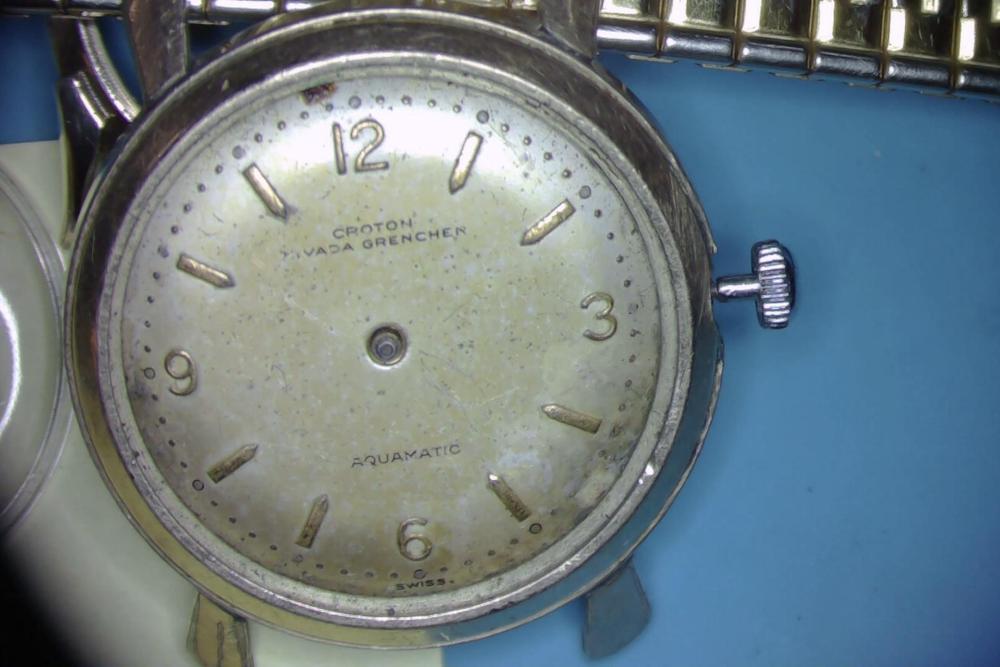Leaderboard
Popular Content
Showing content with the highest reputation on 06/29/23 in all areas
-
3 points
-
3 points
-
I agree I have a few and they are solid movements. I prefer the 17j versions as well. I have a couple of automatics made in West Germany that are nice. Great to work on and parts are easy to come by as needed. Here is a 1960 (M0) with a nice white dial. The underside of the case is pitted likely from sweat. AS 1430 17j. Runs better, but still needs a service. Time to try my new short set (3) of mainspring winders and try to get more amplitude.3 points
-
I think the MKS tools are Japanese so might be hard to find specific documentation for them. Tom2 points
-
Thats a locking screw for the cam adjustment that the stake fits into. If the cam doesn't lock, the stake can move off centre and not line up with the base holes. You should be able to source a locking screw.2 points
-
Meikosha , yes they are Japanese. I do have a few tool items. They are ok but i would say quality not quite up there with Swiss or German, with the bits i have anyway.1 point
-
I think they are a horotec tool Mark has a set, he might reply with the correct code number1 point
-
Hi the round anvil has a little play but when tightened by the black screw at the Side it’s fixed the punch guide that the set screw locks is eccentric to allow for alignment of the cantering punch, aligning the head and the anvil. Set the anvil first then the punch guide. Alteratively the other way round the i Portman thing is the alignment.1 point
-
It's an end mill. There was a bit of discussion a few weeks ago on them.1 point
-
I use the Bergeon (the one on the left) when on the bench and need a basic measurement. I use the JKA (center) when measuring a staff (or wheel pivots, etc.) and willing to go to the extra effort of fetching it and opening it up. It consumes bench space, so I use it only when its features are necessary. I use the caliper on the right when working on my lathe. I used a Mutitoyo digital caliper (not shown) for crystals, stems, crowns, etc. BTW, I picked the Bergeon for $47 plus shipping and tax on ebay. It was a steal.1 point
-
1 point
-
I have seen it described differently- acrylic was developed in the 1930s and as it was more durable than celluloid it became a requirement of WWII military specs…but let’s see one! Pics..1 point
-
1 point
-
Another shot with a slightly less worn crown. This one is signed and I can gain better purchase for winding. Hard to see but I like the wet dial look, at the base of the hour numbers you can see it a bit. Also got a shot of the movement while swapping out the replacement crown/stem (yes I had another non runner with the same movement and case size apparently).1 point
-
1 point
-
I picked this Black dial 1967 manual waterproof Caravelle up in a lot for $13.20. It sat in my drawer for a few months not working and one of the other watches in the lot had my attention. Found it last night and took off the balance and fiddled with it a bit. Put it back together added a $2.75 new acrylic and a $4 forest green nato strap. Not bad for $19.95 US. Needs a crown and a general servicing, but the dial is sweet. Is a 7 jewel Japan movement that is a bit erratic on the timegrapher, but is only about 1 minute fast after setting and 10 hours wind.1 point
-
There's pro video on testing Mitutoyo concluding they're fine for hundredths. Feintaster is great for people like me who could never caliper a jewel without tiddly-winking it across the room...1 point
-
I use Mitutoyo digital calipers for large stuff, where I don't mind being off +- a hundredth of a mm. When I need to split hundredths, it's a micrometer. I prefer non-digital ones as they are lighter and more compact, I find digitals cumbersome. Then there's an array of bench mics, with various shaped spindles and anvils, horizontal and vertical, and some indicating bench mics that will reliably measure to microns. Large mics for diameters up to 75mm, internal mics, I think there's at least a couple dozen around the shop haha. But a good caliper and regular 0-25mm mic covers most everything. Digital or vernier is a matter of choice. Mitutoyo for digital calipers are by far the best on the market, mine are over 20 years old and run at least a couple years on a battery (I never turn them off), and check out spot-on on gage blocks like when they were new.1 point
-
I think a digital caliper is accurate enough for most work. The only time I use my digital micrometer is when using the lathe. Somehow, the micrometer is easier (more ergonomic) to use when measuring things on the lathe.1 point
-
Callipers are fine for “rough “ work, micrometer is better for finer accuracy but for pivot and jewels you need something like a JKA feintaster. Different levels of accuracy and fine measurement. Tom1 point
-
Now all we need is to find a Chinese version that does size and not cal winders.1 point



